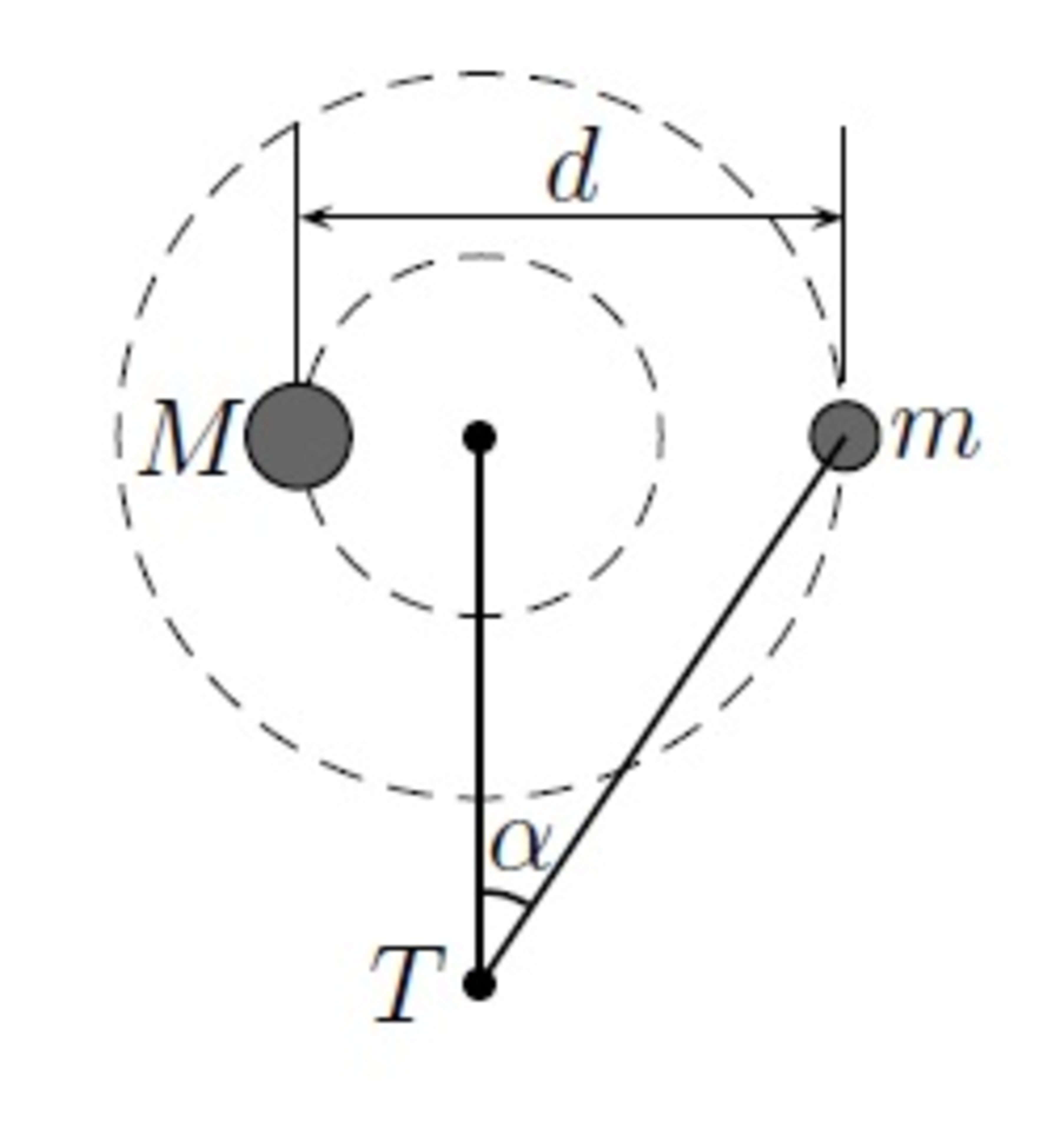Binary System
A binary system consists of two spherical stars of respective masses m and M, whose centers are distant from each other, each describing a circular motion about the center of mass of that system. With the star of mass m in the position shown in the figure, due to the Doppler effect, an Earth T-observer detects a ray of the hydrogen spectrum emitted by that star with a frequency f slightly different from its natural frequency f0. Consider the Earth at rest relative to the center of mass of the system and that the motion of the stars occurs on the same plane of observation. Since the velocities of stars are much smaller than c, mark the alternative that explicitly states the absolute value of (f - f0)/f0. Note: (1+x)^n ≅ 1 + nx for x << 1.

This section requires Javascript.
You are seeing this because something didn't load right. We suggest you, (a) try
refreshing the page, (b) enabling javascript if it is disabled on your browser and,
finally, (c)
loading the
non-javascript version of this page
. We're sorry about the hassle.
0 solutions
No explanations have been posted yet. Check back later!